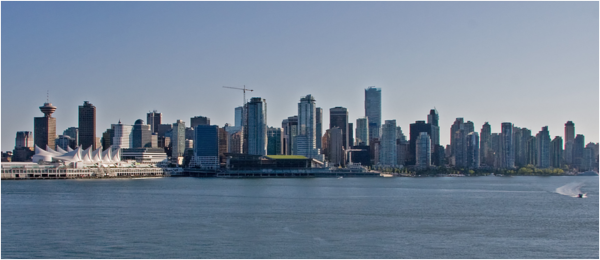Looking to apply for a Canadian visa but not quite sure about the steps to take? That’s fine. Getting a visa isn’t quite easy, especially for high-risk nationalities.
Most countries have an online portal for travel visa applications. Online applications make visa processing seamless and – at their best – reduces waiting times at the Point Of Entry (POE). But then, do you know the entry visa requirements for Canada and how to get your application granted?
Today in the life of foreign talents keen on moving abroad, Canada is one of few attractive options. Our young ones between the ages of 25 and 29 want Permanent Residency (PR) via an Express Entry (EE) or the Provincial Nominee Programme (PNP).
Others just want to visit. You’ll find some guiding steps here regardless of your travel needs. Before we proceed, never overstay your visa. Canada does a remarkable job of enforcing its visa regulations without discrimination. You’d be kicked out and banned.
If you were wondering about how to apply for a Canadian Visa in Nigeria, Vectatravels.com presents you with detailed information.
Quick One
- We assume you’re travelling with a Nigerian Passport
- You intend flying into Canada
- You’re a Nigerian

Nigerians fancy a handful of opportunities travelling abroad offers and are making moves in droves
Who needs a Visa to visit Canada?
Nigerians, who aren’t permanent residents of Canada or any of her visa-exempt countries, need a Visa to fly into Canada or transit through.
What type of visa do I require to visit Canada?
Your visa requirement depends on your purpose for travelling and intended duration of stay. Be that as it may, there could be more than one option for your situation. The following Visa types are reserved for different purposes and are subject to approval from the Canadian consular office.
A transit visa: You may want to know whether you require a transit visa if arriving and departing from the same Canadian airport on the same day. Or for a connecting flight in Canada within the same airport (not changing airports but might be changing terminals).
Let’s say you’re travelling with a Nigerian passport, and:
- You’re not a dual Canadian citizen or a PR of any of the transit visa-exempt countries.
- Your airline hasn’t verified that you are eligible for the Transit Without Visa Programme (always check eligibility with your airline)
- On an international flight set for a long stopover (in 48 hours or less) in a Canadian airport on its way to another country.
- Will be connecting between two international flights at a Canadian airport.
- Don’t have a visitor visa
In any of these cases, you need a transit visa. But, FIRST, have valid passport for yourself and whoever is travelling with you.
This type of visa is stamped on your passport. It could be valid for up to two entries, depending on your connection plans. The application can be done online or via a paper document.
In Most Cases
You’re kept in a sterile transit area within the airport if on a connecting flight in Canada to other international destination. The aim is to keep you from interfering with other passengers and goods. You’ll have to call at Passport Control to leave the reserved area for any reason.
On a less stringent note (where you’re just changing planes), you go directly from the arrival gate to the screening area, on to the departure lounge.
How to apply for a transit visa
Fill out the application form for a visitor visa (find links below) and select “Transit” as the “Visa requested.”
If you plan to visit Canada during transit or stay beyond 2 days, you require a visitors visa (next paragraph).
A visitor visa (also known as a temporary resident visa): This is the official document required to visit Canada for up to six months. The Visa will be stuck on to your passport and grants you a right of passage at any Immigrations, Border Services Agency or Citizenship checkpoints. It indicates the date by which you must arrive in the country (not in any way a deadline for your arrival).
Canadian visitor visa application requirements
- Applicant must have a valid international passport (at least 6 months before expiry)
- Have a copy of an employment letter
- Provide a copy of company identity card
- Certificate of Incorporation
- Company business card/call card
- An original and a photocopy introduction letter from candidates company (stating the reason for seeking visa (vacation, business, or studies etc.)
- Original copy bank statement (showing a sizeable/considerable balance)
- 3 Recent passport photographs (white background) (45mm*35mm)
- Tax Clearance certificate
- Proof of ownership of assets (property, shares etc.)
Step-by-step application process
- Download the Application and family information form
- Complete the Application form by Providing accurate information. All questions must be answered in English
- Review the information’s you entered for accuracy
- Validate the Application form only
- Printout both forms
- Bring the Application form and family information form with you to the Embassy for Biometrics and Submission
- Pay your visa fee at the Embassy
@CitImmCanada hi Ircc ! I have a visitor record. Can i travel out of canada and come back without any problem?
— Indian Summer (@S_Vijaytha) July 22, 2019
A visitor record: So you arrived at the airport (or had been living in Canada for not more than 5 months) on a visitor’s status and want an extension? You just might want to pay the Canada Border Services Agency a visit. Unlike the visitor Visa, this isn’t stamped on your passport – you get a separate document. You must apply for this document 30 days before you’d have overstayed your visitor’s visa. However, your visitor record is no longer valid the moment you leave Canada. If you wish to leave and return to Canada, a visitor visa is more appropriate.

You can apply for an extension on your visitor visa 30 days before it expires
How to apply for extension via visitor record
It’s advisable to apply online (faster). Meanwhile, you wouldn’t have to complete the online form if you’d applied at the Border control.
Canadian visitor record application requirements
- Electronic copies of your documents
- A valid credit or debit card
Step-by-step application process
-
- This form completion guide helps you complete each field appropriately
- Asked “What would you like to do in Canada?” by an online tool, select “Visit”
- Asked “What is your current country/territory of residence?” by an online tool, select “Canada”
- Sign-up or sign in to your online account
- Submit your form
- Check your status
Once you’ve applied for an extension, you can legally remain in the country until a decision is made on your application. For application taking longer than necessary, you can contact immigration via this form.
Super visa: Parents and grandparents can visit their children and grandchildren, who are permanent residents or a Canadian citizen, for up to 2 years at a time. This is a multi-entry Visa that grants holders multiple entries for up to 10 years. Moreover, if your parents’ super visa expires as a result of the validity of their passports, they will have to apply for a new super visa.
Requirements for a Super Visa
Pro-Tip:
Where the questionnaire asks, “How are you related to your family member?” You must, against all odds, answer “child/grandchild.”
- You must be applying from outside Canada
- You must have a letter of invitation from your child or grandchild, which should clarify:
- That they could foot your bills throughout your stay
- That they are citizens or permanent residents
- The number of people who already stays in their household
- Receipt of medical insurance from a Canadian insurance company. The insurance must be a $100,000-and-above coverage, valid for at least their first year in the country.
- That your parent had a medical examination at the immigration
- That their child or grandchildren meet the minimum necessary income. For instance:
- Documents of their child or grandchild’s employment letter with salary and date of employment
- Bank statements
- Notice of Assessment (NOA) or T4/T1 for the most recent tax year
- Pay stubs
A work permit: Green passport holders need a work permit to live, work and earn in Canada. Your work permit could be ‘Employer-specific or Open’. It’s employer-specific if you would only work for a particular employer, for a pre-identified duration. The rarer open work permit lets you work for any employer aside from defaulting job providers and adult content creators. You may require the Bridging open work permit if you await the outcome of your PR application or your current work permit expires in four months and you seek an extension.
Download the Canadian work permit requirements for Nigeria here
On a general note and regardless of the type of work permit you apply for, you must:
- Be able to prove, during your interview, that you will leave when your work permit expires
- Justify that you have enough money to take care of yourself and your family members (if travelling with any) during your stay and to return home
- Be sure you’d not been indicted for any criminal offence in the past and prove you’d obey the law
- Be healthy (a medical certificate might be required)
- Not plan to work for a blacklisted employer
- Not be a danger to society
- Not intend to work for a company, who offers escort services and the likes
- Have every other document requested
Are You a Highly-Skilled Person?
Tech talents and other skilled employees are benefitting from the Global Skills Strategy (GSS) launched by the Canadian Government in June 2017. It has attracted about 24,000 people over the past two years and helped Canadian employers source for global talents as quick as possible. The programme offers outstanding international talents temporary work permits in as little as two weeks.
Can I get the two-week Canadian work permit?
The answer depends on whether your Canadian employer needs to submit a required Labour Market Impact Assessment (LMIA) application or not.
Who gets an LMIA-exempt?
Managers and professionals, like researchers, highly valued on the country’s national job rating system get permit exemption over a shorter period. Your employer, however, is expected to have submitted a job offer via a dedicated Employer Portal and paid a compliance fee.
Who requires Canadian LMIA?
Qualified and experienced international talents needed for a job opening (positive LMIA) are qualified for the two-week temporary work permit processing through the Global Talent Stream. Software engineers with impeccable capabilities are gaining Canadian employment via this channel. Your confirmation letter must be positive, you must have gotten a job offer letter, a contract, a copy of the LMIA, and LMIA number to be eligible. This also means your legal partner, spouse or children could get the two-week processing on their visitor visa, work or study permit applications where applicable (but they must apply at the time of your application).
Two-week (temporary) work permit processing
- Get Nigeria-specific instructions from the requirement document above
- You must apply online from outside Canada
- You and dependants must submit complete applications
- Include a medical assessment (if required)
- Include police affidavit if required
- Pay the processing fees
- Where biometrics is required, have the result submitted within two weeks of submitting your application
- Get Nigeria-specific instructions from the Canadian work permit requirement document above

Many Nigerians, both young and old, are keen on getting a Canadian visa in recent years
Study permits: Visiting Canada for vocational, academic, professional training or other educational commitments that’ll run beyond six months require a Study Permit. International students studying in Canadian institutions may work as part of an Internship or Co-op programs as their courses or training demands. The consular service wouldn’t grant work permits to international students beyond the official length of their programme of study. Meanwhile, there’s the Post-Graduate Work Permit which allows international students, who have graduated from a participating tertiary institution, to gain valuable work experience for up to 3 years after graduation.
Permanent Residency
A friend once said, “moving to Canada is pretty easy”, isn’t it? Maybe not as easy for a regular carpenter as it is for a bachelors degree holder applying for MSc in one of the Canadian institutions that fund postgraduate qualifications. The latter could get a Postgrad Work Permit once she’s done with school – that’s enough time to apply for permanent residency. I’ve reserved all the details about getting a Student visa for a separate blog post but will quickly highlight PR in the closing paragraphs.
Permanent Residency via Express Entry and Provincial Nominee Programmes
Simply put, EE allows skilled immigrants to submit a profile and be considered for PR (according to a point rating system). EE application could be completed online and candidates with the highest rankings are invited to apply for PR.
EE Covers the Following Immigration Programmes
Canadian provinces and territories, like Ontario, also use the EE to enrol candidates through the Provincial Nominee Program (PNP).
NB: Study permit and guideline for getting PR will be covered in a later blog post.
All Canada visa applicants are outrightly considered for a multiple entry visa (which allows you to visit for six months at a time as much as you want). However, the outcome often means you get a single entry visa if you’re participating in a one-time special event, your application is bound by statutory country-specific procedures or guidelines, you’re travelling on a limited purpose (say, foreign nationals on an official visit).





Deprecated: File Theme without comments.php is deprecated since version 3.0.0 with no alternative available. Please include a comments.php template in your theme. in /home/vectatravels/blog.vectatravels.com/wp-includes/functions.php on line 6121